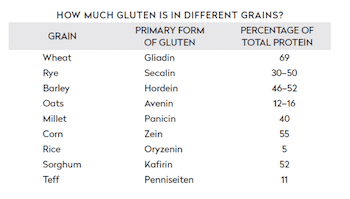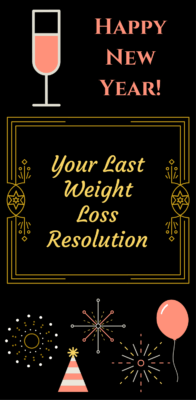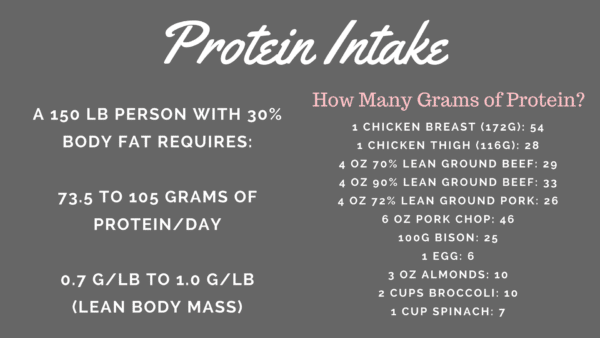I earn a small commission via affilate links at no extra cost to you.
We see it every January. For about a month or so people are motivated to change their lives and one of the most popular new years resolutions is to get healthy again. They do what conventional wisdom tells them in hopes they’ll find weight loss. The steps they take to get healthy consist of watching every calorie they consume, they exercise hard as often as they can and they inevitably burn out. We’ve been earning and burning calories for decades and it simply doesn’t work long term. Keep reading to get my 6 easy weight loss tips.
The conventional wisdom to getting healthy fails people because it is false. When you restrict calories your body adjusts by burning fewer calories so that you don’t eventually die. Your body needs that energy to live and when it senses a famine situation it will adjust by using fewer calories. The go hard or go home approach to exercise also doesn’t burn body fat. This is why if you Google the success rate of the conventional diet you’ll come up with 95-99% failure rates. If you make a new year’s resolution every year with an aim to get healthy again maybe it’s time to ask why you can’t get healthy and stay healthy?
Some may say that this post isn’t good for a health coach’s business. I’m about to give you all of my weight loss tips and I hope it does help you get healthy again. How come I don’t mind sharing these tips for your new year’s resolution? Coaching is about more than just information. There are countless books out there that will tell you the same things, so what I’m saying isn’t a secret. For the people who can read this post or one of these books and follow what it says, you likely don’t need me as a coach anyway. Health coaching is for the person who has struggles changing their routine. If you need a community of support join my Substack.
Weight Loss Tip #1: Easy Hack For Getting Healthy Again
Depending on who you ask 80-90% of your body composition is determined by the food that you eat. You don’t need a calorie restricted diet you simply need to shift to nutrient dense foods. Think red meat and vegetables and a lot of them. Some suggest 9-14 cups of vegetables a day. When you replace processed food with whole foods you’ll likely notice a boost in energy, your hair, your skin, your mood, and your waist line. If you’re not sure where to start the check out the vegetable intake Dr. Terry Wahls outlines in her protocol. (The woman has MS and went from a wheelchair to a mountain bike by changing her diet! Need I say more? Watch her Ted Talk.)
Nine cups of vegetables (white potatoes and corn don’t count) is a lot of food for some. If you can’t eat that many try to strike a balance between these 3 groups:
- Greens
- Colorful on the inside
- Sulfur (Brassicas: cauliflower, kale, broccoli, cabbage, etc.; Alliums: onions, garlic, leeks, scallions, etc.; Fungi: mushrooms.)
Weight Loss Tip #2: Getting Healthy Again With Quality Fat
Throw out anything with polyunsaturated fats. This is the easiest weight loss tip because you won’t likely miss it. Vegetable oils play a big role in insulin resistance. These fats are incorporated into the cell wall of your fat cells. If you’ve ever struggled to lose the last 10 to 15 pounds these fats may be why. They’re not supposed to be a part of your fat cells and their presence inhibits fat metabolism, ie your body has trouble burning these fat cells. Even more alarming is that these fats damage your DNA. Dr Cate Shanahan refers to polyunsaturated industrial seed oils as the equivalent to consuming radiation. After all, isn’t that what radiation does to the body?
Polyunsaturated fats are one of the largest sources of calories in the U.S. At home it’s easy to avoid them but eating out it’s much more difficult. Ask for things to be cooked in butter, not butter flavored oil, if you can. Also, avoid foods from the deep fryer. A single serving of french fries makes your arteries stiffer for the next 24 hours which is definitely not a step towards getting healthy for anyone.
Polyunsaturated Industrial Seed Oils
- Corn
- Soy
- Canola
- Cottonseed
- Sunflower
- Safflower
- Rapeseed
Good Fats
- Lard
- Tallow
- Duck fat
- Ghee
- Grass-fed butter (Kerrygold)
- Avocado oil
- Olive oil (from the US and unheated)
Weight Loss Tip #3: Focus on Quality Sleep and Stress Reduction
Did you know that stress and sleep deprivation can contribute to weight gain? This works via the sympathetic nervous system, the fight or flight system. When stress is short-term this system is beneficial. Living as a hunter gatherer we’d occasionally encounter animals that could make us their dinner. Imagine the feeling you’d get if you walked up on a bear while you’re out for a hike in the woods. That’s your fight or flight sympathetic nervous system in action. The adrenal glands release cortisol and cortisol pulls glucose out of storage and makes it available as a quick energy source.
Today the problem is that most of us are constantly stressed and sleep poorly. Under constant stress cortisol remains elevated which also keeps glucose constantly available. Your body stores glucose as glycogen in the muscles and liver; when they are full of glycogen the body begins turning the excess glucose to triglycerides and storing it as body fat.
If you get 30 minutes less sleep a night than you need just on week days, you have a 39% higher risk of insulin resistance. If you get an hour less sleep a night, you have a 78% higher risk. [1]
What is insulin resistance? It’s when your muscles and liver become resistant to the body’s signals to store glucose. What happens when your liver and muscles are resistant to storing glucose? Your body has to do something with it so it stores the glucose as body fat. Then your brain perceives that your blood is starved for nutrients and the appetite hormones leptin and ghrelin promote hunger.
An insulin resistant liver believes the blood is starved for glucose so it begins to manufacture more glucose. Extra glucose made by the liver is immediately stored as fat because the muscles are resistant to insulin. That is, when you’re constantly stressed and unable to sleep your body works as it’s own sugar making fat storage machine. Here’s another weight loss tip you might not know: sleep has just as much of an impact on how much you weigh as exercise does. It’s better to get a good night’s sleep than deprive your body so you can get in a 4 am workout. Sometimes a successful new year’s resolution is simply learning what a healthier option looks like.
What Causes Insulin Resistance?
- Chronic production of excess insulin
- Insulin resistant liver
- Insulin resistance
- Fructose – non fatty liver disease
Study: Normal healthy subjects were overfed fructose. De novo Lipogenesis (DNL) – or the production of new fat in the liver increased six fold accompanied by a 79% increase in plasma triglycerides. A measure of insulin resistance in the liver increased by 28%. After 6 days!
Weight Loss Tip #4: How Grains, Sugar, and Sweeteners Hinder Weight Loss
Since we were just discussing insulin resistance I thought I’d get to the elements that cause an insulin response. Any foods that metabolize into glucose will produce an insulin response. Living in America the bulk of the Standard American Diet (SAD) is made up of grains and sugars. If you want to get healthy again consider going grain free. It could be a big piece of the puzzle. Have you ever tried to avoid all added sugars? It’s nearly impossible if you eat food from packages. Modern wheat is the worst because it produces a larger insulin response than table sugar!
One of the steps to getting healthy you often hear about is incorporating whole grains. The truth: they’re not that healthy. When humans developed agriculture our brain and body sizes shrunk, chronic disease developed, and we no longer have room for our wisdom teeth, to name a few. Check out my blog post with 12 Reasons To Go Grain Free.
For decades we’ve been told to eat brown rice and whole grains. They do contain more nutrients but they also contain more anti-nutrients making it a wash when it comes to what the body actually absorbs. Phytates are the anti-nutrients found in grains. They bind to minerals and prevent your body from absorbing them. Do you suffer from Iron, Magnesium, Calcium, Zinc, or a Manganese deficiency? It could be the grains and/or legumes you’re eating. Legumes also contain phytates but not as many.
If you absolutely must have some kind of grain in your life, let’s face it they’re great for stretching the budget, I recommend this white rice recipe from the Bulletproof Blog. In this recipe the rice is turned into a resistant starch which feeds beneficial gut bacteria. By hacking your rice this way you also eliminate the glucose production that accompanies typical rice.
Grains also contain lectins. Have you ever heard of leaky gut? Lectins are one of the compounds that damage the lining of the digestive system. If you’ve been paying attention they’re now linking leaky gut to autoimmune disease, allergies, autism, food intolerances, IBS, skin issues, rheumatoid arthritis, systemic inflammatory response syndrome, Type 1 diabetes, thyroid problems, nutrient malabsorption, and mood issues. Eliminating grains is simply an experiment to see if it’s one of the steps you can take to getting healthy.

Gluten is one of the other culprits that damages the lining of the digestive tract. One of my pet peeves is people who claim to be “gluten-free” because it’s simply not true. All grains contain gluten, even rice. What is interesting is that so many “gluten-free” foods are made with corn and it’s second on the list, right behind wheat, in terms of gluten content (zein). If you want to learn more read No Grain, No Pain by Dr. Peter Osborne.
 Weight Loss Tip #5: How Much Protein Should You Eat For Weight Loss?
Weight Loss Tip #5: How Much Protein Should You Eat For Weight Loss?
While there are studies that show that people who eat more protein can lose weight, because they’ve replaced carbs with protein, too many have taken this as permission to go crazy with the protein. Protein is one of the macronutrients that can accelerate aging when it’s consumed all day long.
Unless you’re a world-class athlete you probably don’t need the protein shakes or bars. Have you ever known someone who works out daily and always seems to have a protein shake in their hands? They’re bulky but they never really reach the toned physique you’d expect them to have.
Problem #1 is that they workout too vigorously, too often and Problem #2 is that they consume too much protein. Granted they most likely consume too many carbs too due to their sugar burning workouts combined with insulin releasing ingredients in most protein shakes. In the body, gluconeogenesis (in this case the conversion of protein to glucose) is largely driven by demand for glucose. When you consume too much protein your body converts the excess to glucose and it has the potential to be stored as body fat. Insulin is the storage hormone that is released when glucose is abundant, but it also prevents fat burning.
The good news is that a sensible portion of quality meat (grass-fed, wild caught, pasture raised, aka animals living in their native environment) becomes more affordable when you’re no longer buying expensive supplements. Protein intake is based on your personal lean body mass. People have varying body fat percentages, ages, and activity levels so the protein requirement to get healthy again is different for everyone.
In the example above you’ll see that there is a range of 73.5 to 105 grams. The bare minimum for someone with this body composition is 73.5 grams. If this person is sedentary I’d also hover around 73.5 grams. For those who are active you’ll have to balance your protein intake with your level of activity. As you can see from the list of protein in foods it’s very easy to eat 73.5 grams of protein in a day; this is why I say that most people don’t need the shakes and bars. You’ll get far more nutrition and satisfaction by eating a steak than you will from drinking a protein shake.
Weight Loss Tip #6: Exercise That Works For Weight Loss
I bet you thought this would be at the top of the list because it’s the most important but actually it’s not. Americans exercise more than any other country in the world yet we are #7 in terms of obesity.
Exercise is a celebration of what your body can do, not a punishment for what you ate.
When it comes to burning body fat it isn’t a simple calories in vs calories out equation. First, not all calories are created equally. Your body is going to do different things with 100 grams of broccoli or steak versus 100 grams of ice cream. Secondly, most people believe that regular, long, strenuous workouts are going to burn the calories to make you thin, after all that’s what the exercise machines tell you. The thing is, you need oxygen to burn fat and most of the intense exercise that people do puts them in the anaerobic zone, oxygen isn’t available. When oxygen isn’t available during exercise the body relies on glucose for fuel.
Using glucose for fuel triggers cravings for glucose and unless you are in a laboratory setting it’s virtually impossible to refuel with the right amount of carbohydrates to only fill the liver and muscles. Remember that when the liver and muscles are full the excess glucose gets stored as body fat. So, you workout hard, you refuel with carbs, you gain weight, and then you decide that you need to workout hard again. Lather rinse repeat. In my 20’s I gained 30 pounds in a year by exercising this way. There was a step class with a little kickboxing thrown in that I genuinely loved. I didn’t go to lose weight. When I joined the gym I was 6′ tall and 135 by the end of the year I was 165. Noticing that I was on the cusp of needing bigger clothes (a size 8 or 10) I quit the gym and I lost weight.
Now as a mom the age of 43 following The Primal Blueprint exercise and eating strategy I am the smallest size I’ve ever been, a size 4 but I weigh somewhere around 150 lbs. (I don’t own a scale. I hate them.)
What should your exercise look like?
- 2-5 hours of general daily movement
- Walking is excellent!
- Keep your heart rate at or below 180-your age to keep oxygen available (see Dr. Phil Maffetone’s website for adjustments to this equation based on your fitness level and health conditions)
- Lift heavy things
- Twice a week for 30 minutes
- Pull-ups, push-ups, plank, and squats can all be done at home and varied to suit your level of ability
- You can increase the intensity but don’t go over the 30 minute mark
- Sprint
- Once every 7-10 days sprint for 10-30 seconds 4-6 times at your maximum effort with full recovery between efforts. Running is best buy you can also sprint while swimming or riding a bike for a low-impact or cross training effort.
- Sprinting causes the body to release testosterone and HGH (human growth hormone).
- It puts you in fat burning mode for the next 24 hours.
These 6 steps will get you much further than conventional wisdom. You can implement each step a week at a time or all at once, just make sure you check with your physician because everyone has different needs. If you need some help making these changes I offer personalized coaching to those who qualify. I’m wishing each of you the very best in all of your endeavors in 2018 and beyond! Happy New Year!
Originally posted on December 4, 2017 @ 08:49





 Weight Loss Tip #5: How Much Protein Should You Eat For Weight Loss?
Weight Loss Tip #5: How Much Protein Should You Eat For Weight Loss?
Thank You Myla!
Thanks @Shannon! I try to explain things clearly as possible so that hopefully anyone can understand what I am trying to say. Thanks for the feedback!
A lot of very useful information and you explained things so well! I relate to a couple of things you mentioned so there are definitely some things to think about. Thank you for sharing it with us.
Very honest, truthful, and straightforward article! I love how you really broke it down and explained each step so completely. This is really great information, thanks for sharing it with us!